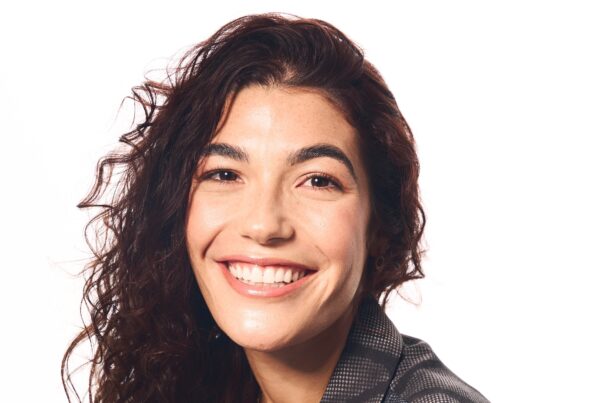Building muscle mass needs a regular workout using weights and resistance training. However, eating habits can affect how muscles grow. In the body-building world, two terms describe a type of eating habit that helps develop muscle strength and mass. These two terms are cutting and bulking.
Aside from exercise and food, other factors such as hormone levels determine muscle development in people. Studies have suggested testosterone levels increase muscle mass by increasing the muscle’s ability to synthesize protein.
However, what are cutting and bulking, and are these methods the best way to build muscles? Additionally, what are the benefits and risks of doing these two eating methods when attempting to increase muscle mass?
This article will define cutting and bulking, show tips on using these two methods to improve muscle development, and list the risks and benefits. After reading this write-up, individuals will have an overview of eating methods for building muscle, which they can employ when they move forward on their body-building path. If you’re interested in knowing the best supplements to use for cutting and bulking, visit this page. Longevity Live Paid Content.
Are Cutting and Bulking the Best Muscle-Building Methods?

Photo by Andrea Piacquadio from Pexels
Many are talking about cutting and bulking methods in many body-building circles. However, what are these methods anyway?
Bulking is eating more calories than one can burn to gain weight. The idea for bulking is that more weight will help an individual build muscle mass. Bodybuilders often combine the bulking method with resistance training, which results in muscle gain. There are two main methods of bulking: Clean and Dirty bulk.
- A clean bulk is a nutrition-based calorie intake. It is a controlled diet that predominantly consists of nutrient-dense foods.
- A dirty bulk is using any diet, including junk food intake, to increase the body’s calorie levels. Both of these bulking methods aim to increase calories to boost muscle development.
Cutting is the method of eating fewer calories to lose body fat without losing muscle mass. Bodybuilders usually start cutting after a bulking period to trim the added weight from unused calories that didn’t transform into muscle mass.
When in a cutting phase, one may still have some exercise routines. Typically, bodybuilders combine weight lifting while cutting to hasten fat loss while maintaining muscle mass. Cutting is a short dieting program that people often do after or before an event.
How Does Cutting and Bulking Affect Muscles?
Cutting and bulking methods both affect the muscles. However, the difference lies in the opposite methods of gaining muscle mass. Yet, despite the testimonies of these methods working, it is still prudent to ask about the benefits and potential risks of these two eating methods for building muscle.
Benefits
First, we look at the benefits of bulking.
- Builds muscle – When starting bulking, individuals need to counter the added calorie intake with workouts. Because of this, they engage the muscles and make them bigger.
- Boost strength – Regular exercise will develop the muscle and add strength.
- Boosting bone density – Bones become strong when the body is active and working.
- Helping exercise recovery – Bulking means increased food intake, giving energy before and after working out.
Secondly, these are the benefits of cutting.
- Enhances fat loss – People in a cutting phase limit calorie intake to reduce fat in the body. When cutting, the body enhances and encourages fat loss.
- Improves muscle appearance – Muscle detail is more prominent in lean bodies. Shedding fat may help improve the look of muscles.
- Increase athletic performance – Bodies not hampered by excess fat perform better in athletic events such as sports.
Risks
Here are the main risks of bulking:
- This may lead to excess fat – When individuals bulk up, they eat up more than they can burn to help build muscles. It poses a risk, especially when doing dirty bulking where people ingest high-calorie foods with low nutritional value, such as junk foods.
- It may make individuals feel sluggish and less agile. The increased weight and diet may lessen their agility and make them feel less energetic, sluggish, and heavy.
Here are the risks associated with cutting:
- It can lead to slight muscle loss – When cutting is not monitored correctly, it can lead to weight loss and muscle loss.
- May disrupt one’s metabolism – Cutting is dieting for bodybuilders. If people constrict themselves to a limited diet it may affect their body’s metabolism.
- It may disrupt eating habits – When one is constantly subjected to constricted diet, it can lead to disordered eating.
Cutting and Bulking Tips for Bodybuilders
Cutting and bulking are methods bodybuilders use to build their muscle mass. It has been used by many people and is widely accepted as a method individuals can use to improve their muscle build.

Photo by Alora Griffiths on Unsplash
Here are some tips from fitness communities on how to use cutting and bulking methods to get positive results.
- Cycling runs – When cutting and bulking, individuals can squeeze a few cycling runs into their workout. Cycling can help put on more muscle and gain strength. People can start with bulking, cycling, and then shift to cutting.
- Track improvements – Fitness communities advise tracking people’s improvements in cutting and bulking. They’ll get an idea of how their body adapts to the two methods and see where they can improve.
- Adjust when needed – When people see changes in their body, constantly adapt and adjust. Individuals should monitor their progress, note how their body reacts, and tweak their routine. Cutting and bulking is a learning process. If things are not working, change them and adjust.
References
- Effect of testosterone on muscle mass and muscle protein synthesis https://pubmed.ncbi.nlm.nih.gov/2917954/
- Everything to know about cutting diet https://www.medicalnewstoday.com/articles/cutting-diet#what-it-is
- Is Bulking and Cutting the Best Way to Build Muscle? https://greatist.com/fitness/bulking-vs-cutting



![women [longevity live]](https://longevitylive.com/wp-content/uploads/2020/01/photo-of-women-walking-down-the-street-1116984-100x100.jpg)










